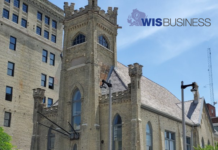The Brookings Institution is highlighting Madison and Milwaukee as potential hotspots for tech innovation and economic growth.
The new report details a proposal calling for $10 billion in annual federal funding over the next 10 years for “regional growth centers” in the country’s heartland. The plan aims to address the growing economic disparity between high-growth metropolitan areas and the rest of the country.
Wisconsin’s two largest cities are included among the top communities in the nation for innovation potential based on factors such as the number of patents held, the share of STEM degrees, university R&D spending and others. Madison made the top spot on the list of 35 metros across the country, while Milwaukee came in at number 17.
Madison has around 71 patents per 100,000 population, while Milwaukee has around 44. Though Madison has a much smaller population, the city has more than 10 times as many STEM doctoral degrees.
The Case for Growth Centers report was released by the Metropolitan Policy Program at the Brookings Institution and the Information Technology and Innovation Foundation. It shows the country’s top five metro areas for innovation — Boston, San Francisco, San Jose, Seattle and San Diego — accounted for more than 90 percent of U.S. innovation sector growth between 2005 and 2017.
Gov. Tony Evers is urging the state’s congressional delegation to carefully consider the proposal and what it could do for Wisconsin. He says the state is “uniquely poised” to lead the nation in the entrepreneurship and innovation space, given its top-rated research universities, growing venture capital activity, coordinated economic development efforts and other factors.
“This type of bold initiative could not only support the communities that receive funding, but ultimately strengthen our state and our country and support our position on an increasingly competitive world stage,” Evers said.
Madison Region Economic Partnership CEO Paul Jadin says the organization has pledged its support to advance the report’s proposal. He says the region’s economic stability as well as “stratospheric growth in our information communications technology and biosciences sectors” make Madison an ideal location for federal investment.
In his letter, Evers credited the state’s “major corporations” for their commitment to tech innovation, pointing to corporate leaders in both Milwaukee and Madison.
“Milwaukee’s corporate leaders are working together to support the Milwaukee Tech Hub initiative, there are significant corporate investments in Madison’s tech startup ecosystem, and both communities are home to a growing number of corporate venture capital funds,” Evers said.
Report authors are calling for more federal support for research funding, graduate research fellowships, the Small Business Innovation Research program, and workforce development programs.
The report’s $100 billion proposal is a rough estimate, and report authors claim the associated economic impacts would result in a “considerably lower” net cost to the federal treasury. They also say the cost could be “more than offset” by canceling $14.7 billion in annual federal fuel industry subsidies.
“Terminating those subsidies would free up $150 billion of revenue over 10 years — more than enough to support the growth centers program and begin narrowing the nation’s regional gaps,” they wrote.
See the full report: http://www.brookings.edu/research/growth-centers-how-to-spread-tech-innovation-across-america/






